Recapping our Conversation on SaaS as a High-Growth Market: Product Management
The Software as a Service (SaaS) industry is the perfect industry for studying best practices with respect to Product Management. The pace of innovation, iteration, and constant cycle of releases means that companies can quickly identify new problems to solve for customers, design and test solutions, pilot, and scale successes within a matter of months rather than years. This, however, leads to a fundamental challenge

The Software as a Service (SaaS) industry is the perfect industry for studying best practices with respect to Product Management. The pace of innovation, iteration, and constant cycle of releases means that companies can quickly identify new problems to solve for customers, design and test solutions, pilot, and scale successes within a matter of months rather than years. This, however, leads to a fundamental challenge for many SaaS player —how to prioritize your product and R&D teams’ time to make sure they’re pushing the envelope, but not wasting too much time pursuing non-validated ideas.
That is the topic we address in this Leadership Dialogue. Treacy & Company Senior Analyst Cathy Daniel moderated a conversation between two leaders in the product space, Product Advisor, and former CPO of GitLab, Scott Williamson, and T&Co Principal, Yan Vinarskiy. In case you missed the discussion, below is a recap of some of the most important elements of designing and launching products in the high-growth SaaS market. Stream the full conversation here: https://vimeo.com/761259672
Best practices for designing winning products
Figuring out a really important problem to solve is the foundation for every winning product. Williamson kicked off the conversation by noting that companies will often jump the gun and get excited about a new widget or feature. Unfortunately, they lack the understanding of the underlying problem for the product to be scalable or commercially successful.
Vinarskiy added: “Don’t assume you know all the answers and just jump straight to what you think the solution is. Go out and talk to real buyers and users before you decide what to build to ensure that you’ve nailed down the problem.”
The next step is to go out and talk to real buyers and users before you decide what to build. Speaking to them directly about their desires and concerns will set your product up for success rather than dealing with obstacles or having to rightsize down the road. Once you’ve nailed down the problem and validated the solution, you can begin the building process.
Critical elements to put in place before a product launches
Achieving launch excellence and scaling a product as quickly as possible requires all hands-on deck and a complementary team with the experience and know-how to launch the right way. The go-to-market team is responsible for everything from ideation to staging to packaging, so it is essential that the team’s efforts are aligned.
Vinarskiy iterated that consistency of messaging is key. The website, product, and marketing should say the same thing the sales representative says. Having a super tight, simple-yet-powerful message repeated over and over across all customer channels sets your product up for success.
Williamson related that at GitLab, “We had the good fortune of having enough product marketers that, when it came time to create the messaging and other marketing materials, the team had context, empathy for the user, and understood who this product was for.”
The earlier the product marketing team, including marketers and sales representatives, is involved in the process, the more likely the launch will scale quickly and be successful.
Focusing on disruptive (not iterative) innovation
Before fostering disruptive innovation, you must first be able to define it. An innovation like the iPhone is considered disruptive because it was a giant leap forward in mobile phone technology and fundamentally changed an entire industry. On the other hand, iterative innovation is the progression from, say, the iPhone 10, to the iPhone 11, to the iPhone 12. The product already exists, but you’re adding new features to innovate further, explained Vinarskiy.
He said that various signals will indicate when it’s time to move from iterative innovation to more disruptive innovation, such as shifts in industry trends or emerging competitors making waves. such as the industry starting to shift or emerging competitors. Vinarskiy noted that one of the hardest things to do in a large company is focus efforts on new innovation when most teams invest most of their time and effort into the company’s existing core products.
The answer, according to Williamson, is spending time as a leadership team defining a strategic roadmap that balances your investment across three horizons of return—next 1-2 years, next 3-5 years, and next 5-10 years.
“The key is to be intentional about how much you want to spend on each horizon—and that ratio can change over time,” Williamson says. “Maybe you’re 100% on horizon one because all that matters is continuing to grow that core product. Or if you want to be a long-term, high-growth company, you almost need a funnel to continue to grow fast over time. The challenge is managing each of the horizons.”
There’s no perfect answer to how companies can foster disruption innovation because it depends on what stage you’re in and what your competitive environment looks like. However, SaaS companies can prepare for high growth by having a solid product team to spearhead innovative products. Product management as a career is still evolving, and it will be needed more and more as SaaS growth happens.


